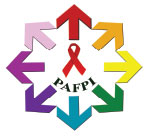PAFPI-EpiC SRHR Training-Workshop Learnings
Keywords (not limited to): sexual and reproductive rights, sexual rights, reproductive rights, human rights, body autonomy, autonomy, “my body, my choice”, “owning our body”, equality, choice, confidentiality, family planning.
1. United Nation on the Rights of Health
UNFPA, is UN’s agency for sexual and reproductive health agency. Where they promote in “working towards global reproductive health; autonomy and empowerment; and gender equality”. Central to its vision and goals is the “fundamental right of individuals (including young people) to decide, freely and for themselves, whether, when, and how many children to have”.
Connecting largely, or mainly in the human rights aspect of sexual and reproductive rights, United Nations Humans Rights, where the Office of the High Commissioner, through the Special Rapperteur on the right to health, “mandated to pay attention to groups in vulnerable or marginalized situations, to apply a gender perspective, and to address the needs of children in the realization of the right to health.”
The right to health is the right to all among others, focusing therefore including but not limited to the “LGBT and gender diverse persons”, “people who use drugs” (PWUD) or people who inject drugs (PWID), and as has been already highlighted above, other groups of individual in vulnerable situations.
2. Sexual and Reproductive Health Rights and HIV-AIDS
The United Nations, Sexual and Reproductive Health Rights is related to multiple human rights, among other, “including healthy occupational and environmental conditions; and access to health-related education and information, including on sexual and reproductive health.” Where it focused in women, “violations of women’s sexual and reproductive health and rights are frequent. These take many forms, including: denial of access to services that only women require…poor quality services…early marriage“, including the importance of pregnancy issue. Now, in the very recent time, it is intergral and relevant to understand more than ever, that the issue/s and its challenges cut across not only with women but among men as well, extending to important aspects of key populations with transgender, PWID/PWUD, MSM or in general defined terms where this key populations plays an important aspect in understanding the challenge and helping mitigate if not resolve the rise of HIV-AIDS cases not only in the Philippines but other countries globally.
SRHR, in relation to HIV-AIDS, STI (sexually transmitted infection)/OI (opportunistic infections) includes the self-care interentions through HIV Testing and to have better understanding of sexually transmitted diseases.
3. PAFPI-EpiC Training-Workshop – Some Concepts and Ideas According to Module Design for the Training in Philippine Context
To understand how HIV-AIDS works through in our body, the training-workshop team as it discussed what SRHR is, it included to discussed body autonomy – focused on the female and reproductive health system, and SRHR challenges in the Philippines.
What SRHR according to World Health Organization?
Sexual health is a state of physical, emotional (feelings and view of self and body), intellectual and social (relations with others) well-being in all aspects of sexuality. Additionally, WHO states that “it is not merely the absence of disease, dysfunction or infirmity. Sexual health requires a positive and respectful approach to sexuality and sexual relationships, as well as the possibility of having pleasurable and safe sexual experiences, free of coercion, discrimination and violence. For sexual health to be attained and maintained, the sexual rights of all persons must be respected, protected and fulfilled.””
Reproductive health is a health is a state of complete physical and psychosocial well-being in all matters related to the reproductive system and its functions and processes. Further, WHO explains that “Reproductive health implies that people are able to have a satisfying and safe sex life and that they have the capability to reproduce and the freedom to decide if, when and how often to do so.”
What body autonomy is according to UNFPA?
“Body Autonomy means my boidy is for me, my body is my own”; It’s about about and it’s about agency, it’s about choice…Bodily autonomy is the foundation for gender equality, and above all, it’s a fundamental right.”
“The right to bodily autonomy means that we must have the power and agency to make choices, without fear of violence or coercion, or having someone else decide for us. But often these decisions are made or influenced by others – partners, families, societies, governments.”
Wraping up SRHR Training-Workshop Learnings
This is the summary, zeroing in the “Fundamental Principles in SRHR” that is essential in understanding SRHR:
- Work in respectful partnership.
- Advance human rights and reproductive rights through SRH programming.
- Ensure technical, human rights and financial accountability.
- Share information and results.
For additional information on:
- Men, Adolescents and Boys SRHR help package services – please see link here / specific link.
- Categories of human rights – please see link here.
- 12 Elements of SRH according to “The Responsible Parenthood and Reproductive Health Act of 2012” of the Philippines – please see link here. =
Resources:
- United Nations Population Fund (https://www.fp2030.org/unfpa/)
- “Adolscents and Youth”, UNFP (https://www.fp2030.org/focus-areas/adolescents-youth/)
- “Human rights in the context of HIV and AIDS”, Resolution adopted by the Human Rights Council
on 5 July 2018 (https://documents.un.org/doc/undoc/gen/g18/221/72/pdf/g1822172.pdf?token=seTY4ThjLwprKKXwZ9&fe=true) - “Purpose of the mandate”, Special Rapporteur on the right of everyone to the enjoyment of the highest attainable standard of physical and mental, health (https://www.ohchr.org/en/special-procedures/sr-health)
- “Self-care for interventions for HIV”, World Health Organization (https://twitter.com/WHO/status/1632723895340998658)
- “Self-care interventions for health”, https://www.who.int/news-room/fact-sheets/detail/self-care-health-interventions
- “Know Your Sexual & Reproductive Health Rights Now”, https://www.graciarainafoundation.com/single-post/2019/02/12/know-your-sexual-reproductive-health-rights-now
- “Sexual health and well-being” (https://www.who.int/teams/sexual-and-reproductive-health-and-research-(srh)/areas-of-work/sexual-health)
- “Reproductive health in the South-East Asia Region” (https://www.who.int/southeastasia/health-topics/reproductive-health#:~:text=Reproductive%20health%20is%20a%20state,to%20its%20functions%20and%20processes.)
- “International Human Rights Law”, Human Rights (https://www.un.org/en/global-issues/human-rights#:~:text=The%20United%20Nations%20has%20defined,in%20carrying%20out%20their%20responsibilities.)
- “Bodily autonomy: A fundamental right” (https://www.unfpa.org/press/bodily-autonomy-fundamental-right)
- “”My body is my own” : Why the right to bodily autonomy is crucial for individuals, communities and entire nations”” (https://lao.unfpa.org/en/news/%E2%80%9Cmy-body-my-own%E2%80%9D-why-right-bodily-autonomy-crucial-individuals-communities-and-entire-nations)
More contents to come for this topics soon. 🙂
